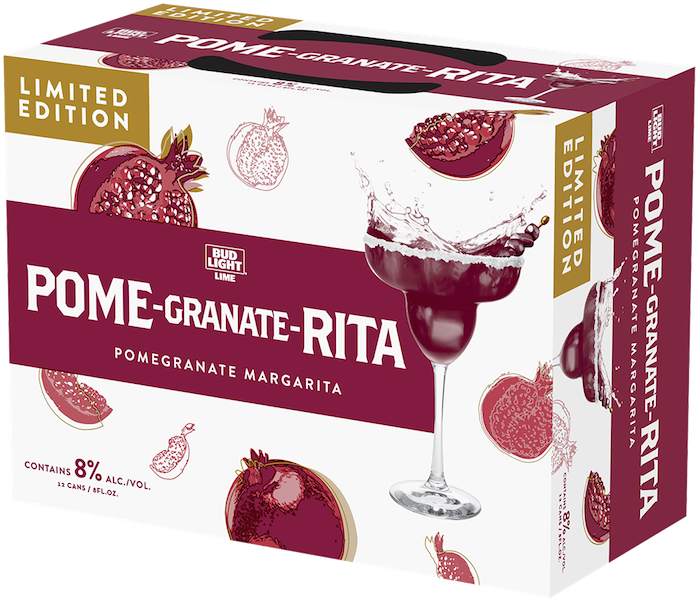Flavored Malt Beverages (FMBs) slowed in growth in 2016 as major brands captured or lost consumer interest.
After the category experienced growth years of +7.5%, +8.2% and +21% the last three years, respectively, it cooled off in 2016 with a comparatively smaller +2.4%. (All information from the Beverage Information & Insights Group and their 2017 Beer Handbook.)
The category had added around 7-10 million 2.25-gallon cases in new sales every year since 2011. In 2016, it gained only 2.65 million. Hardly a bonanza. Its market share of the overall beer category remained relatively the same at 3.9% in 2016, compared with 3.8% the year before.
What’s happening? The reason for the slowdown begins at the top.
Bud Light had struck gold for a few years there with the explosively successful launch of its Bud Light Rita’s line. Coming to market in 2012, the category grew 184.2% in 2013 and 47% in 2014, before following those with 0.5% growth in 2015 and just 0.1% in 2016. It seems that the ceiling of consumer interest is around the 30.700 million cases the brand sold in 2016.
Have consumers had enough? The Rita’s line doesn’t exactly fall into the craft movement defining the rest of the beer category.
Elsewhere, though, consumers’ urge for low-ABV alternatives to beers continues to mean gains for sweet FMBs.
In second place, the Mike’s Hard Beverage brand remained on the rise in 2016. It was up 11.3% to 23.985 million cases. That means last year was even better for the brand than its super successful 2015, which saw a 7% gain, following +3% and +5.5% growths in 2014 and 2013, respectively.
Mike’s Hard has done a good job of positioning itself as a product for both genders, whenever someone wants something alcoholic that’s not super boozy or tastes overwhelmingly like malt or hops.
The third best selling FMB in 2016 found success for similar reasons.
Twisted Tea was up 11.2%, continuing a recent trend of double-digit sales gains for the past four years. The brand totaled 10.843 million cases in 2016, and surpassed 10 million for the first time.
That makes Twisted Tea the rare well-performing brand for its owner. Boston Beer, whose Sam Adams line, once the face of American craft beer, is lagging badly. Twisted Tea remains a popular choice for men and women looking for beer-like alternatives to beer.
Same rings true for Seagram’s Escapes, which finished in fourth place for FMBs with 7.475 million cases. These flavored wine/malt beverages were up 6.8% in 2016.
The rest of the top FMB brands are a different story.
The caffeine-infused malt beverage Four Loco finished in fifth place, but was down 2.6% to 4.638 million cases. After gradually working up to a high-water mark of 5.560 million cases in 2013, the brand has steadily declined since. Perhaps this is due to concerns over the mixing of caffeine and alcohol.
Sparks from MillerCoors was down 3.7% to 3.878 million cases. Diageo’s Smirnoff Twisted also slipped in sales, dropping 2.7% to 3.407 million cases. The company’s Smirnoff Ice achieved a minor turnaround after years of declines, achieving a +3% in 2016 for 3.1 million cases sold.
Non-leading FMB brands declined 3.7%. These brands have been in steady decline for many years, regressing from 15.9 million in 2009 all the way down to 6.09 in 2016. Craft FMBs do not appear to be a stable thing, even though many new smaller brands have appeared in recent years, attempting to jump onto the rising tide of FMBs. Whether these smaller brands can attain stable market share remains to be seen.
Even some of the bigger brands struck out in FMBs. Bud Light looked to gain more market share in the category when it launched Mixxtails — cocktail-flavored FMBs — in 2015. After a lukewarm reception, the new brand was discontinued in 2016.
Why do people drink FMBs? The accessibility of these ready-to-drink products is among their top selling points. Malt-based beverages can be sold in more outlets than spirit- or wine-based products, due to their traditionally lower ABVs. Additionally, many are sold in cans, and can be taken to places like beaches, festivals and other spots where glass bottles are banned.
And, of course, they offer a strong selling point as a sweet, flavorful alternative to a hoppy, malty beer.
Since many of these products are packaged in 8-ounce cans rather than the typical 12-ounce beer cans, the brands also offer less liquid at a higher price. That makes them very strong financial performers.
Looking ahead, we expect the category to continue leveling off, like cider did recently, as consumer enthusiasm for new-generation FMBs reaches a natural plateau.
Kyle Swartz is managing editor of Beverage Dynamics magazine. Reach him at kswartz@epgmediallc.com or on Twitter @kswartzz. Read his recent piece Is There a Craft Beer Slowdown?




